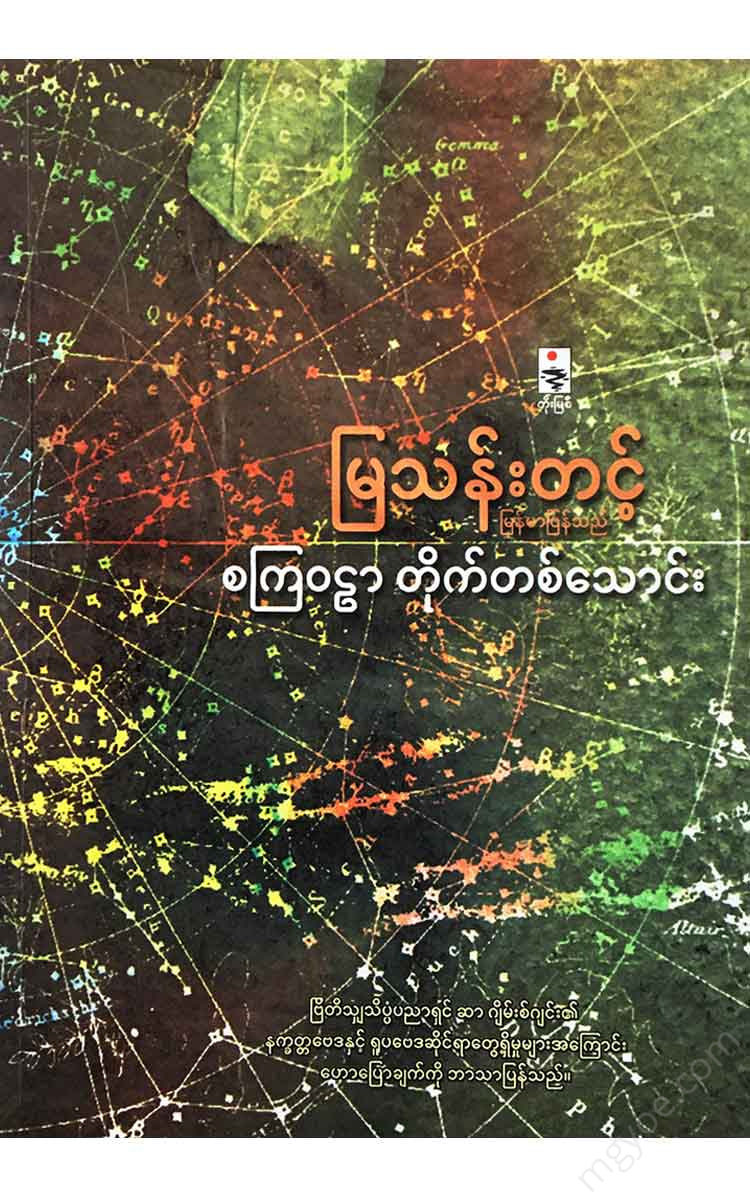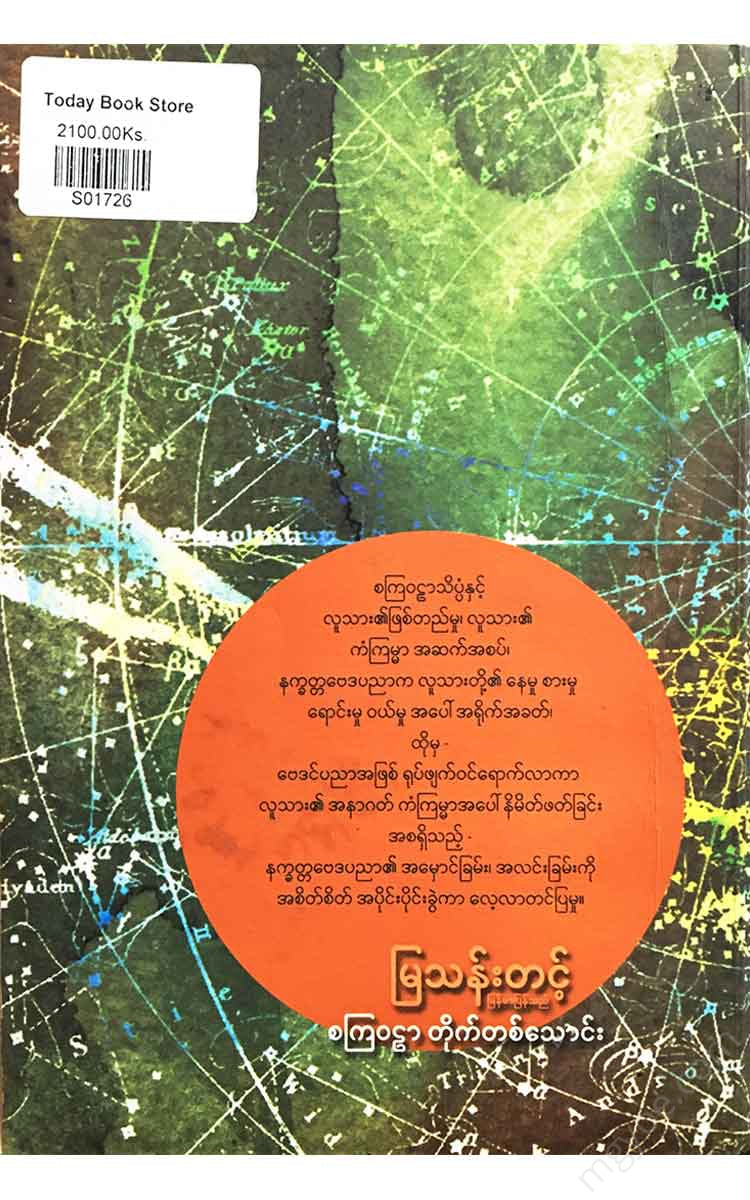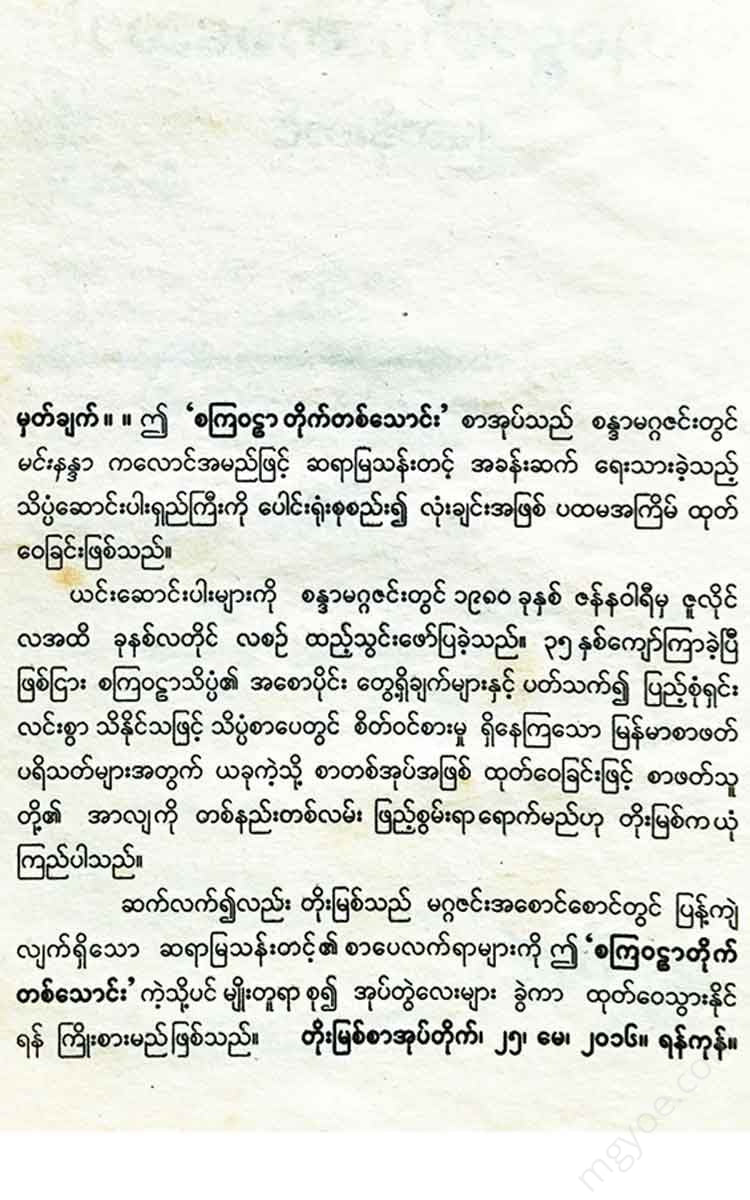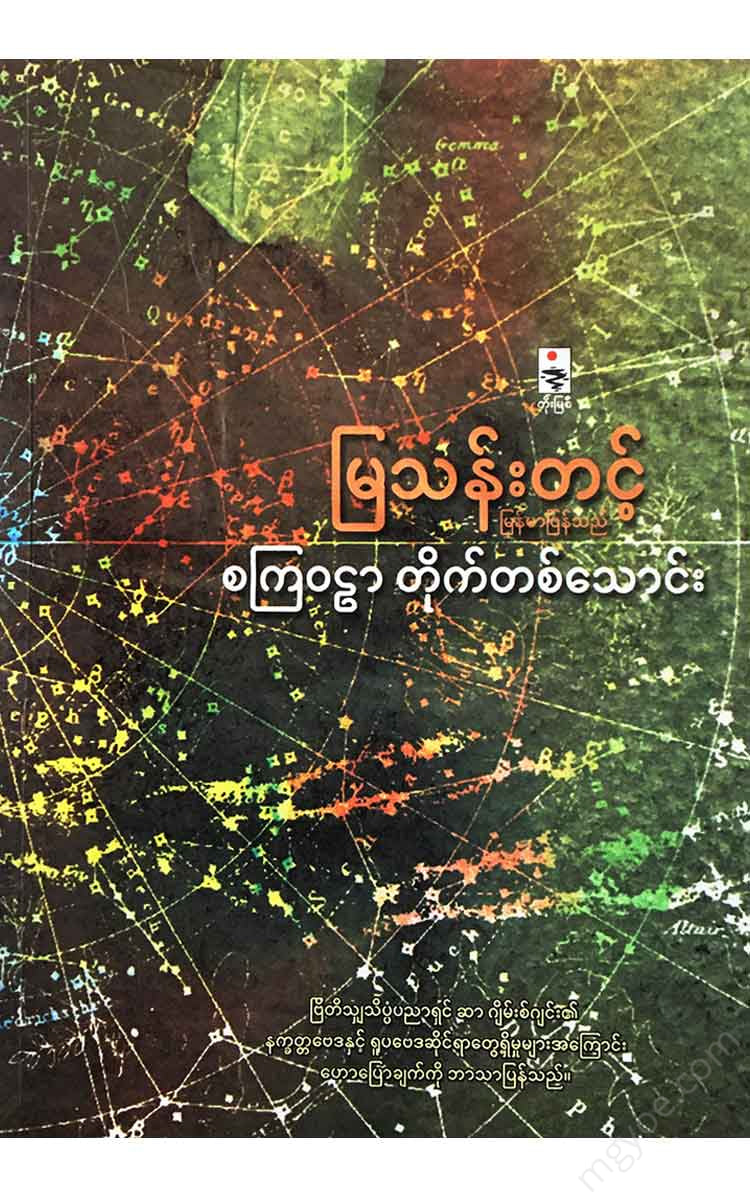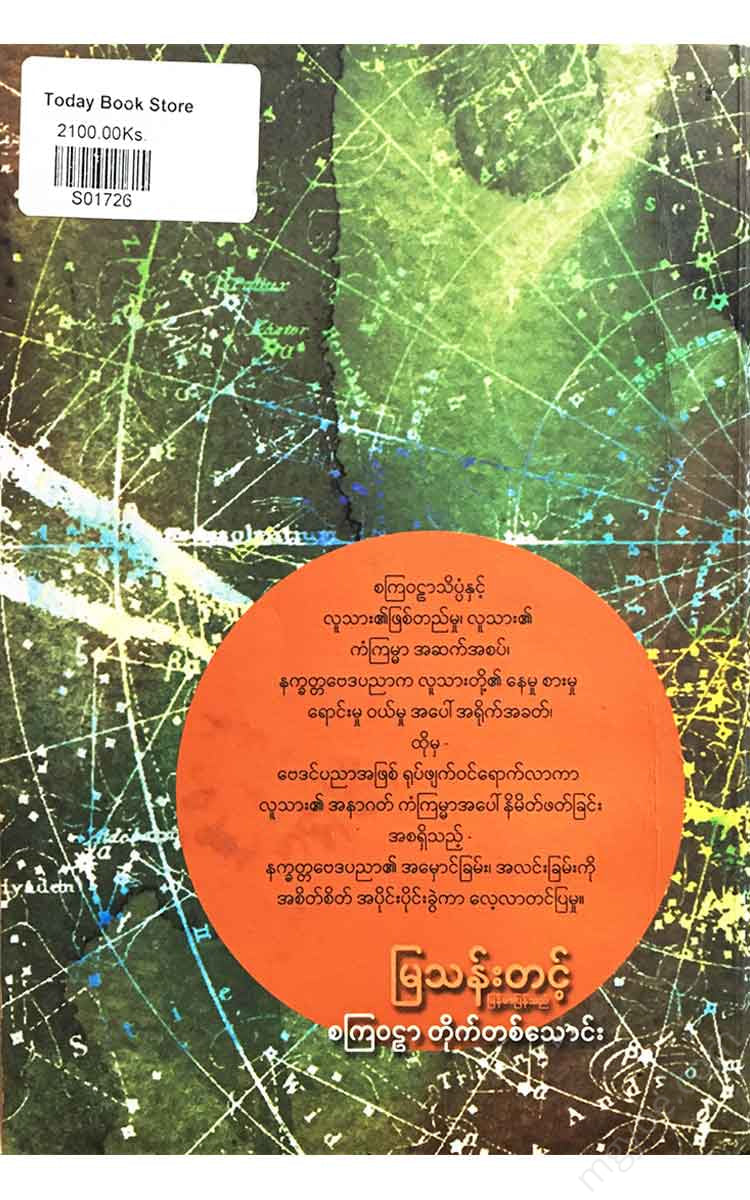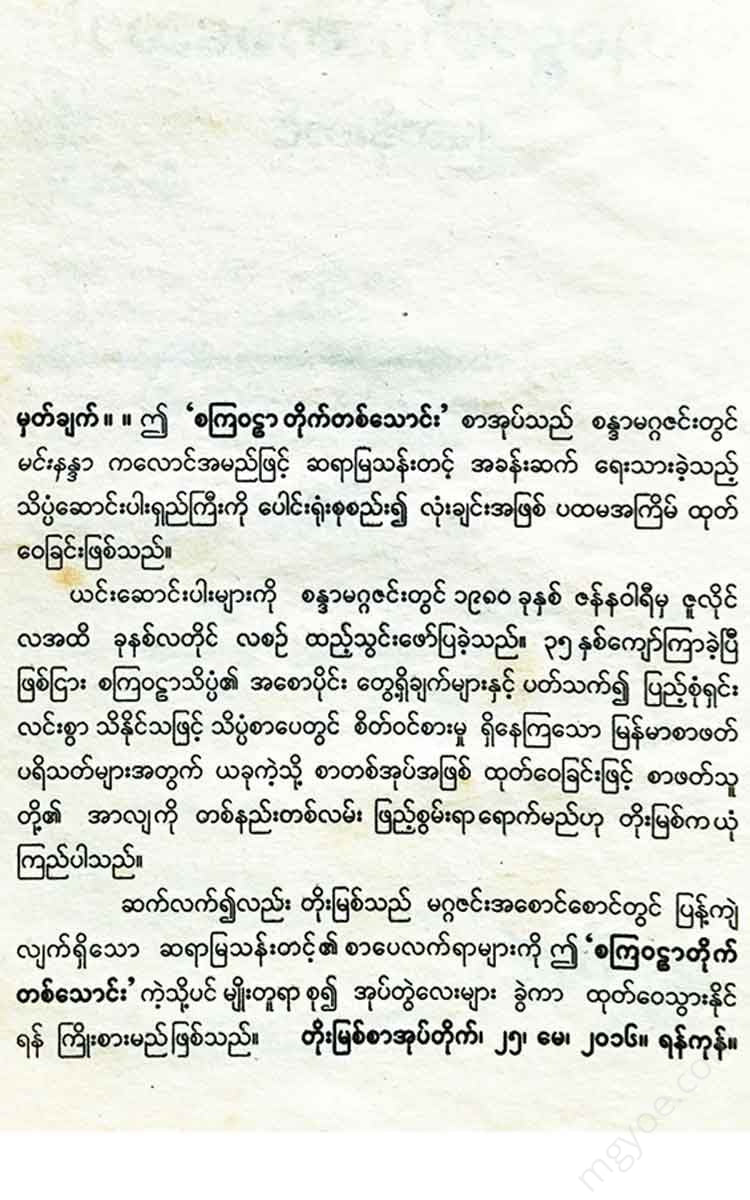Other Websites
Mya Than Tint - Ten Thousand Universes
Mya Than Tint - Ten Thousand Universes
Couldn't load pickup availability
This article is one of the lectures given by the famous British scientist Sir James Jean. His lectures are considered by scientists around the world to be the best, easiest, and clearest scientific literature on the discovery of black holes and physics.
In this book, Sir James Jean explores the universe from the largest stars to the smallest atomic nuclei. He asks and answers questions about the age of the Earth, the heat radiation of the Sun, the types of stars and their characteristics, how stars form, how the universe came into being, and whether or not there is life on other planets.
It will be published monthly for the Burmese reading public who want to read science literature.
Studying the dark side
January 7, 1601, was a special day for the entire human race. That evening, Galileo Galilei, a professor of mathematics at the University of Padua, Italy, sat in front of a telescope he had made.
More than three hundred years before him, Roger Bacon, the inventor of the first spectacle, had described how to make a telescope that could see the stars at will. How to make a lens that would focus the light rays coming from distant objects. When viewed through such a lens, he explained how the light rays passed through the pupil of the eye and reached the crystalline lens. He explained how the eye's ability to see could be improved by using such a device. Just as sound waves were collected by the eardrum and passed through the ear canal, and from there, a person's ability to hear improved.
In 1806, a Flemish optician named Lippershey invented the first telescope. Hearing this news, Galileo studied the telescope and made one himself. Galileo's telescope became a sensation in Italy. People talked so much about this telescope that he was summoned to Venice to show his telescope to the Senate. The elderly senators, trembling with fear, climbed the highest bell towers and used it to look at ships at sea, which were too far away for the naked eye to see. Galileo's telescope was said to be a hundred times more powerful than the human eye. Galileo said that he could see an object fifty miles away as if it were five miles away.
But it goes without saying that Galileo's telescope is a tiny thing compared to modern telescopes. The largest telescope to date, the one on Mount Wilson in California, has a field of view of one hundred inches. This telescope is 2,500 times more powerful than Galileo's telescope. It is 25,000 times more powerful than the human eye. Another telescope, built in California, is four times more powerful than the one hundred-inch telescope. It is a million times more powerful than the human eye.
Galileo was so focused on his telescope that he even forgot about a problem that had been plaguing his mind for a long time. More than two thousand years before Galileo, two astronomers named Pythagoras and Astraeus had studied the universe.
Galileo looked at the Milky Way through his telescope. Suddenly, it looked like a cloud of dust. When he looked closely through his telescope, he saw that the cloud of dust was actually a cluster of stars. When he looked again through the telescope, he saw the real shape of the moon. He could see mountains on the moon casting shadows. And was the moon really like our Earth? As Bruno said, he wondered if this telescope could somehow prove which was right: the Christian idea that the Earth was not the center of the universe, or the revolutionary new idea that the Earth was just one of the planets orbiting the sun like moths orbiting a candle flame.
Next time, Galileo saw the planet Jupiter in the telescope. Around it, four smaller planets were orbiting, like little insects hovering around a candle flame. The scene Galileo saw was exactly the same as the solar system that Copernicus had imagined. This arrangement, if not the exact structure of the universe, at least provided evidence that it was a structure that existed in the universe. On January 30, he wrote to Bellisario Venter that Venus and Mercury, along with other planets, were orbiting the sun, and that the smaller planets were orbiting Jupiter.
If Galileo had any doubts about his discovery, they were completely dispelled after nine months. This time, he looked up at the sky and saw the strange halo of Venus. He saw that the bright surface of Venus, like the surface of the Moon, had a strange halo cycle. The surface of Venus was first a crescent, then a semicircle, then a semicircle, then a full circle. Then it went back and forth, from a full circle to a semicircle, and from a semicircle to a semicircle. What does this show? It shows that the planet's glow is not due to its own light. If it were, its surface would always be completely bright. But even knowing that Venus has no light of its own, there are two things to consider. If Venus were to orbit the Earth in an elliptical orbit (i.e., in a circle centered on the Earth's orbit), only half of Venus's surface would always be illuminated. Half of the Earth's surface would be illuminated, so the half that is obscured by the Earth would be illuminated.
There is no light. That is one thing. Another thing is that if Venus also orbits the Sun in a circle and the Earth orbits the Sun from the outer circle, then the surface of Venus, which is illuminated, must be as dark as the surface of the Moon. Therefore, the surface of Venus becomes completely dark when it passes between the Sun and the Earth. Copernicus assumed the same. Jupiter must also be the same. When they refuted Copernicus's theory, they pointed out that Venus and Jupiter do not have any dark spots.
Now, when Galileo looked through his telescope, he saw that it was exactly as Copernicus had predicted. Venus was a planet. Galileo wrote, “On two questions on which great men had argued and reached various conclusions, we have now arrived at a conclusion that is both conclusive and empirical. These two questions are that the planets have no light of their own, and that Venus and Jupiter revolve around the sun like the other planets. This truth was accepted by Pythagoras, Copernicus, and Kepler. But they did not do so with their own eyes. They only accepted it with their own eyes. Now we know these two planets with our own eyes.”
Galileo's findings prove that Aristotle, Ptolemy, and most of those who have pondered these problems for the past three thousand years have been completely wrong. In the past, man had decided his place in the universe by following his own whims. He considered himself the center of the universe and bitterly rejected the answers offered by scientific thought. Now, with the discovery of these irrefutable facts, man, who had forced himself to sit on the throne of the center of the universe, has fallen. Man must adapt himself to the lowly condition of a person living on a speck of dust, and he must adapt himself to this condition in considering his importance.
But man cannot immediately accept this new situation. He has not yet become accustomed to this new situation. He has not yet put down his pride. He is still waving the banner. Only Christians here
